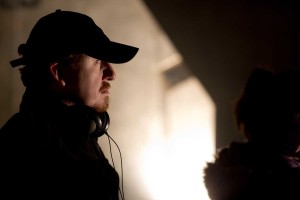
Writer-director Caradog James conceived the new independent sci-fi film The Machine in his native Wales as a result of interest in the idea of artificial intelligence. “It started out of a passion for the subject matter,” he said. “It seemed to me that there hadn’t been an independent movie about the subject. I love hard sci-fi.”
He began by reading as much as he could about the developments of AI especially as they pertained to British developments. “Because I read so much stuff and futurists like Ray Kurzweil, I was able to keep up with what the U.K. government was doing,” James said. “After reading all of this stuff, I met this guy in the U.K. [in the Ministry of Defense] who is building intelligent machines. They mapped a chimp brain. You can use those models for the AIs to make decisions. Next is going to be a human brain. If you have that, what’s the difference between the two? Is there a soul? How you would treat that type of machine?”
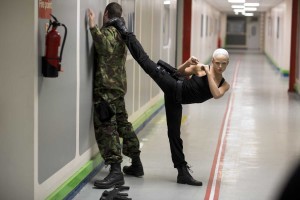
To add to his knowledge base, James also studied children with brain damage. “That wall of information is incredibly distressing,” he stated. “When I met families with autistic kids, I found them so inspiring. I knew that had to be [lead character] Vincent’s backstory. This was all research that I did before I started writing. You need to know who the lead character is, what he wants and why we should care.”
Naturally, James counsels building a foundation with research in one’s chosen subject, including devising backstories for one’s main characters. “I found it to be incredibly helpful,” he said. “It’s amazing how lacking it is in most movies today. Why is no one taking charge of the story? Why don’t I care about anyone? I’m not even sure how much it matters to audiences. It’s not the stories that I was brought up on. It’s all about character and following someone you care about. I can’t write until I’ve worked that out.”
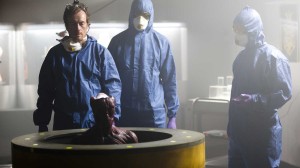 With eight months of research under his belt, James took another year to write the script. “I did at least 15 drafts of the script,” he related. “I had a shape. Myself and [producer]John Giwa-Amu went around the country pitching the story to rooms full of individuals just looking to invest in anything. We raised money bit by bit.”
With eight months of research under his belt, James took another year to write the script. “I did at least 15 drafts of the script,” he related. “I had a shape. Myself and [producer]John Giwa-Amu went around the country pitching the story to rooms full of individuals just looking to invest in anything. We raised money bit by bit.”
In the first conception, James’ script for The Machine resembled a piece of classic horror literature. “The first draft was an adaptation of Frankenstein but modern,” he said. “I was really excited about doing a direct adaptation. I didn’t think a film had captured it properly. It was really interesting, but we couldn’t afford to do it.”
After some minor changes for budgetary purposes, James finally scrapped the Frankenstein direction. “The more I thought [about the Frankenstein direction, I thought] that this was doing a disservice,” he revealed. “I needed to start again with something I can actually film. I guess by three or four drafts of a direct adaptation, I could take it in a completely different direction. Any film that deals with creating new life is going to go back to Frankenstein, but I felt that there was a slightly original more direction to take.”
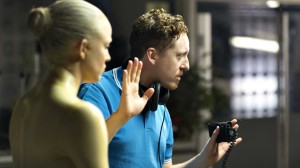 Next, James drew from his real-life inspirations to build the world of his film. “The guy at the MoD [Ministry of Defense] said the movies always get it wrong – we’re always in some chrome white lab,” he stated.
Next, James drew from his real-life inspirations to build the world of his film. “The guy at the MoD [Ministry of Defense] said the movies always get it wrong – we’re always in some chrome white lab,” he stated.
Instead James designed a new direction. “You go into a corridor and there’s furniture from the 1950s and in the corner there is a supercomputer,” James said. “That was a fascinating mix of old and new. I thought that would make a great set design. We could afford it with our budget. I felt it was pretty original and true to life.”
Surely, in any dystopic vision, one cannot help but recall the prescient book 1984. “George Orwell is one of my favorite writers,” James detailed. “I am very pro-technology. I hope that The Machine is one of the most sympathetic characters. New technology, GPS, is great for us, but this stuff was developed for smart bombs. It’s always military first and a trickle-down to civilians. If intelligent machines happen, and I’m certain they will, we will have strong AI that thinks like us. Who are going to be their parents? Who is going to teach this new lifeform?”
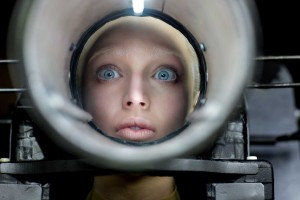 Certainly, the parent-child relationship is at play in The Machine, and James knew he had to anchor that dynamic to his main character, the male lead. “His emotional journey – the machine becomes an ideal relationship to replace his daughter,” James commented. “I saw it as a father-daughter relationship. It has been interesting to see how audiences react. I wasn’t interested in exploring a sexual ground.”
Certainly, the parent-child relationship is at play in The Machine, and James knew he had to anchor that dynamic to his main character, the male lead. “His emotional journey – the machine becomes an ideal relationship to replace his daughter,” James commented. “I saw it as a father-daughter relationship. It has been interesting to see how audiences react. I wasn’t interested in exploring a sexual ground.”
While the script for The Machine was being formed, James and his producing partner went around Britain to fund their project. “As I was writing, we were on this road journey which took seven months,” said James. “Every week, we were going to a different place to raise money. I was writing all this while.”
James explained that he had a trusting relationship with Red and Black Films, and that [Giwa-Amu] was “very open about the challenges of the budget.”
Eventually, James knew that The Machine’s final budget would be 900,000 pounds. “I made a TV movie called Little White Lies made for 90,000 pounds,” he said. “It won best actor at the Welsh BAFTAs. We didn’t get distribution in cinemas because it was a drama. We spent six years developing the project. Producers would give us money to develop the project. I wasn’t going to wait another six years for The Machine. John felt the same way. It was borne from that. I reached my limit of development.”
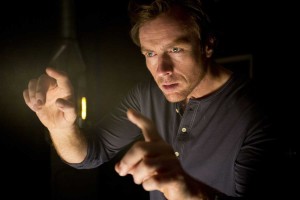 Casting was the next step for the project. “You send the script out and try to get a sales agent to connect the film to distributors and the audience,” the director said. “The barrier that I came up against was that Little White Lies was a TV movie drama. Agents asked, ‘How are you going to do the robot in your script and the sci-fi world? You need 3 million pounds to do this script.’”
Casting was the next step for the project. “You send the script out and try to get a sales agent to connect the film to distributors and the audience,” the director said. “The barrier that I came up against was that Little White Lies was a TV movie drama. Agents asked, ‘How are you going to do the robot in your script and the sci-fi world? You need 3 million pounds to do this script.’”
Going into the feature film venue, James claimed that he learned about filmmaking from making short films. “We knew we could do it, but the industry didn’t,” James said. “We shot a teaser over a day. That was fantastic. We got a great sales agent and it really helped us with cast – Dennis Lawson (who plays a bureaucrat) and Toby Stephens (as lead character Vincent). They could get a sense of the visual tone.”
To find the titular character, a young woman who goes from human to android, James saw 60 actresses before his team decided on Caity Lotz. “She knew The Machine had to be a sympathetic character, an emotional character,” James said, after which he moved onto physical production. “We started looking for locations, and it’s all mostly set in one location to save money onscreen. That’s a massive drain on the time and resources you have. When looking for locations, we found places to build sets in one location. We found an abandoned electronics factory. All the sets that we could, we put in there. We could walk between sets, scrap a set. We had about four-and-a-half weeks to shoot.”
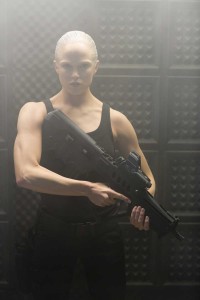 With 10 days of rehearsals before the shoot, James did a final shooting draft of the script. “It’s hard to edit on the page,” he said. “In rehearsals, you begin cutting it down. ‘I can get this across with a look or a beat.’ I’m always looking for that stuff. The first rewrite was during rehearsals. Every night, I was taking stuff out of the script.”
With 10 days of rehearsals before the shoot, James did a final shooting draft of the script. “It’s hard to edit on the page,” he said. “In rehearsals, you begin cutting it down. ‘I can get this across with a look or a beat.’ I’m always looking for that stuff. The first rewrite was during rehearsals. Every night, I was taking stuff out of the script.”
With an initial 112-page script, The Machine ended up with an 87-minute running time. “I never write a 140-page script,” James said. “A lot came out in the edit. It was probably more to do with action scenes planned throughout the film. It was the action that killed us schedule-wise. We had to lose two action sequences. We didn’t have time to shoot them. I’d always rather sacrifice an action scene over something emotional.”
For The Machine’s character, James conceived of various life stages. “Girl, teenager, young woman,” the screenwriter noted. “I had a clear map of how I wanted Caity to deliver. She embraced that, rehearsed that, and together we found the best way to convey that – more naïve, bitter. Some days, she’d be The Machine, Ava, cynical. We had to shoot different pages within one day. I’d have to keep it in my head to plan it. That’s how I direct.”
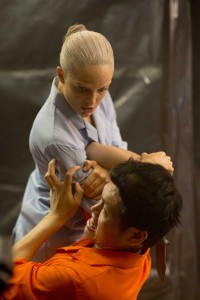 During principal photography, James realized his script, some of which surprised him on set. “We had some fantastic stuff, but we also had some scenes that constantly evolved and were cut—scenes that were written in the second half,” he conveyed. “We were editing for eight months. We had 400 VFX shots in the movie. My collaboration with the editor was very important. He was more objective. It was great to have a fresh pair of eyes.”
During principal photography, James realized his script, some of which surprised him on set. “We had some fantastic stuff, but we also had some scenes that constantly evolved and were cut—scenes that were written in the second half,” he conveyed. “We were editing for eight months. We had 400 VFX shots in the movie. My collaboration with the editor was very important. He was more objective. It was great to have a fresh pair of eyes.”
Lastly, James started to have test screenings of The Machine. “We didn’t have to, but it’s something that John and I feel is important,” he said. “Why not get it out to the audience? Their response was very enlightening. The feedback was that we were spending too long explaining why The Machine works. This was a holdover from that research that we had done. ‘We know this stuff – get to what happens next!’”
Caradog James’ The Machine has had a limited 2014 theatrical release in the U.S. and Europe and is already available as a digital download from Amazon.com. The full DVD release in North America will be on June 17, 2014.





